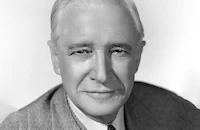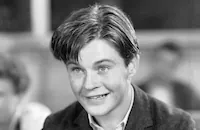Hat, Coat, and Glove

Brief Synopsis
Cast & Crew
Worthington Miner
Ricardo Cortez
Barbara Robbins
John Beal
Dorothy Burgess
Paul Harvey
Film Details
Technical Specs

Synopsis
After New York defense attorney Robert Mitchell runs into his estranged wife Dorothea in a department store, where he is buying a coat, she, a hat, and her new lover, Jerry Hutchins, a pair of gloves, he is invited to her Greenwich Village studio for a friendly dinner. During the evening, Dorothea receives a telephone call from Jerry, and Robert, who had been hoping to convince his wife to return to him, suddenly leaves. The next day, Robert spots Jerry, a struggling painter, in a Greenwich Village shop and, after learning his name, shows up at his apartment. Instead of finding Jerry there, however, Robert is greeted by model Ann Brewster, a former lover of Jerry who is trying to force her way back into his life with threats of suicide. Though drunk, Ann deduces Robert's relationship to "Jerry's woman" and, out of deluded spite, grabs a gun, dials a telephone number that she believes is Dorothea's, and shoots herself. To avoid a scandal, Robert slips away from Jerry's apartment, unaware that his wife's hat and an old coat of his are there. After Jerry is accused of Ann's murder, Dorothea begs Robert to defend him, and Robert agrees on condition that she not provide Jerry with an alibi, and that, once the trial is over, she return to him without seeing her lover again. During the trial, the prosecutor introduces Dorothea's hat, Jerry's gloves and Robert's coat as evidence to implicate Jerry in a love triangle. To counter, Robert calls in Mme. Du Barry, a milliner, who Robert knows is the person that Ann mistakenly telephoned on the night of her death. After Mme. Du Barry identifies the male voice she heard that night as being exactly like Robert's, not like Jerry's, Robert tricks Thomas Sullivan, Jerry's young neighbor, into identifying him as the man he saw leaving Jerry's building. Because of Robert's clever questioning, Jerry is acquitted, and Dorothea is spared from scandal. Although Robert magnanimously offers to renege on the second part of the bargain, Dorothea, who watched her husband's performance at the trial with renewed love and pride, ends her affair with Jerry and returns to Robert's side.

Director
Worthington Miner
Cast

Ricardo Cortez
Barbara Robbins

John Beal

Dorothy Burgess

Paul Harvey

Sara Haden

Margaret Hamilton
David Durand
Murray Kinnell
Frederick Sullivan
Gayle Evers

Irving Bacon
Wilbur Higby

Samuel Hinds

Louise Beavers
Marcelle Corday
Edith Van Cleve
Joseph Anthony

Tom Brown
Crew
Pandro S. Berman
Ralph Dietrich
George D. Ellis
Francis Faragoh
J. Roy Hunt
Charles Kirk
Kenneth Macgowan
John Miehle
Van Nest Polglase
Eddie Pyle
Max Steiner
C. C. Thompson

Film Details
Technical Specs

Articles
Hat, Coat, and Glove
By Glenn Erickson

Hat, Coat, and Glove
Quotes
Trivia
This was originally a 'John Barrymore' vehicle. However Barrymore's alcoholism was catching up with him and his memory repeatedly failed. After three days of production with virtually nothing shot, the producers were forced to replace him with 'Ricardo Cortez' .
Notes
According to news items, RKO originally bought Wilhelm Speyer's play as a vehicle for John Barrymore. After Barrymore dropped out of the production, Adolphe Menjou was offered the role, and Paul Lukas was also considered in the part. RKO borrowed Ricardo Cortez from Warner Bros. for the production. In 1944, Gordon Douglas directed Tom Conway in an RKO remake of Speyer's play called A Night of Adventure.














